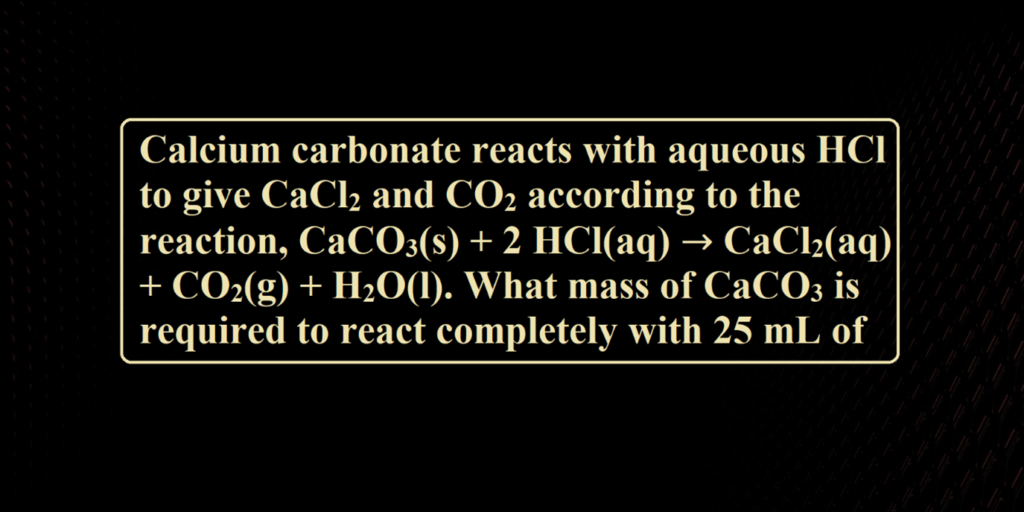Que. Calcium carbonate reacts with aqueous HCl to give CaCl2 and CO2 according to the reaction, CaCO3(s) + 2 HCl(aq) → CaCl2(aq) + CO2(g) + H2O(l). What mass of CaCO3 is required to react completely with 25 mL of 0.75 M HCl?
Ans. 0.75 M means 0.75 mol of HCl is present in 1 L of solution
1 Mol of HCl weighs = 1 + 35.5 = 36.5 g
0.75 mol of HCl weighs = 0.75 × 36.5 = 27.37 g
⸫ 27.37 g of HCl is present in 1000 ml (1 L) of solution
1000 ml of solution contains HCl = 27.37 g
1 ml of solution contain HCl = 27.37/1000 = .02737 g
25 ml of solution contain HCl = 0.2737 × 25 = 0.684 g
We have the chemical equation
CaCO3 + 2 HCl à CaCl2 + CO2 + H2O
2 mol of HCl (i.e 2 × 35.5 = 71 g) react with 1 mol of CaCO3 (i.e 100 g)
⸫ 71 g of HCl reacts with CaCO3 = 100 g
1 g of HCl reacts with CaCO3 = 100/71 = 1.408 g
⸫ 0.684 g of HCl reacts with CaCO3 = 1.408 × 0.684 = 0.963 g



